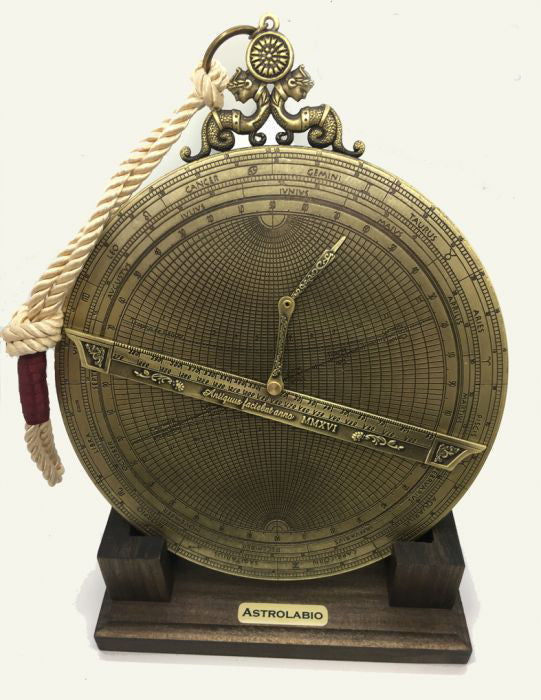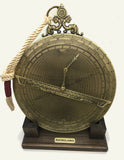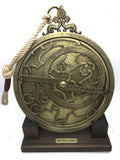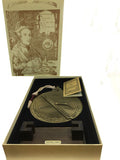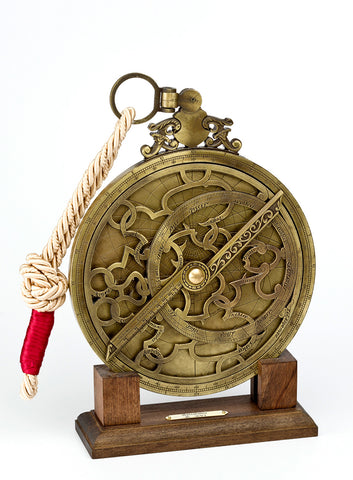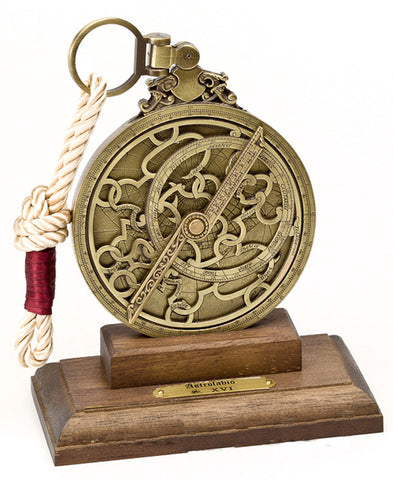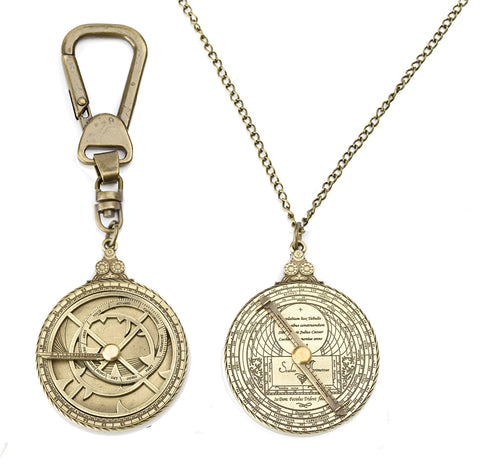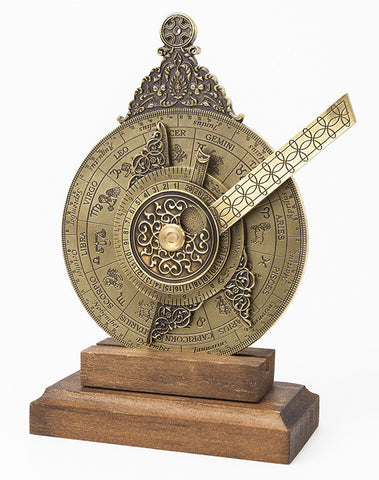Gemma Frisius´ universal astrolabe was based on the Saphea Arzachelis. The saphead uses a variation of the stereographic projection to project the celestial sphere on a plane.
We need to know some terms to introduce the saphead projection. If we cut an sphere through the center, we get a circle named great circle with a same diameter as the diameter of the sphere, for example the equator is a great circle which cuts the sphere through the center and is perpendicular to the axis of the sphere. Another great circle in the meridian passing through the poles named colure. Tropic of Cancer and Tropic of Capricornius are small circles parallel to the equator.
Vernal equinox is the fixed point on the celestial sphere where the sun crosses from south to north. The summer solstice is 90º east of the vernal point and the autummal equinox is 180º. The colure passing through the poles is called equinoctial and the one passing the solstices is called solscitial colure..
The saphead plate is the stereographic projection of a hemisphere of the celestial sphere on the solsticial colure with the origin at an equinox (see figure)
The autumnal equinox is projected at the center. East is to the right and West is to the left.
The horizontal line in the middle of the sphere is of course the equator and we call it equinoctial line,.
The arcs connecting the poles are circles of right ascension and we refer to these arcs as polar arcs.
The vertical diameter represent the equinoxes or a local meridian and it is called meridian
The diagonal line is the projection of the ecliptic, which passes through the equinox, The sun moves along the ecliptic over the course of the year. And is divided in zodiacs signs.
Note that if the projection is rotated so the ecliptic is horizontal, the equinoctial line represents the ecliptic, the arcs above the ecliptic represent arcs of celestial latitude and the polar arcs represent celestial longitude.
In case we move to a point on the extension of the local horizon, the equinoctial line is the horizon and the poles represent the zenith and the nadir of the site, and the polar arcs represent angles of altitude and azimuth.

